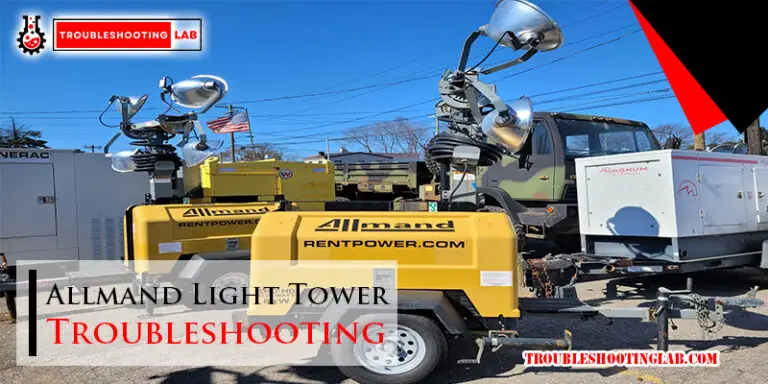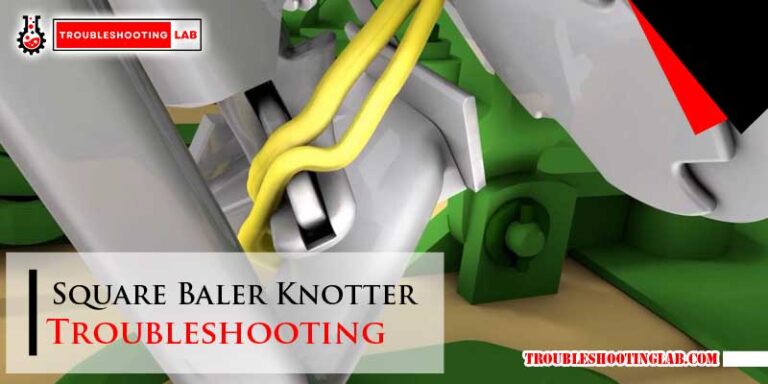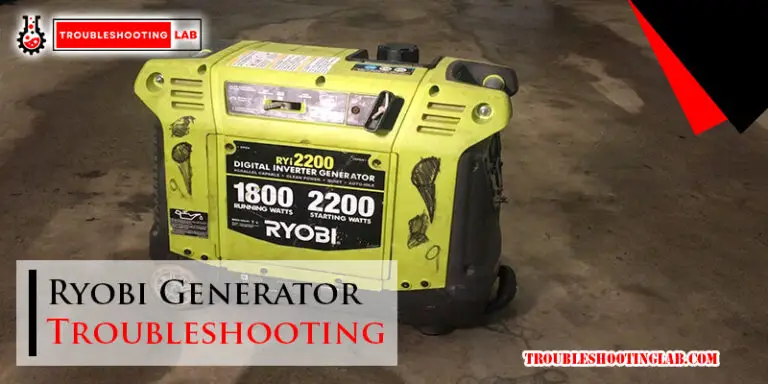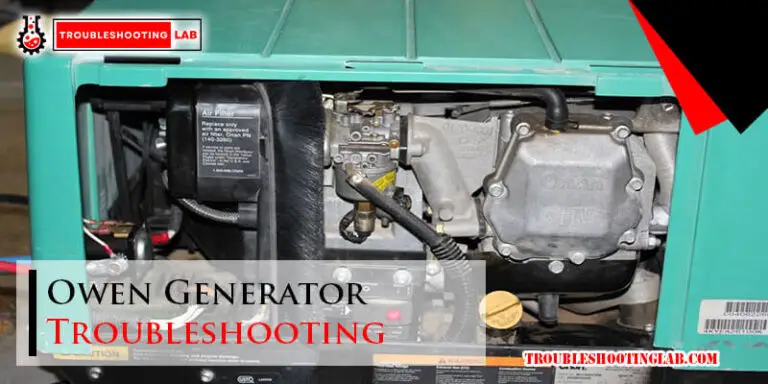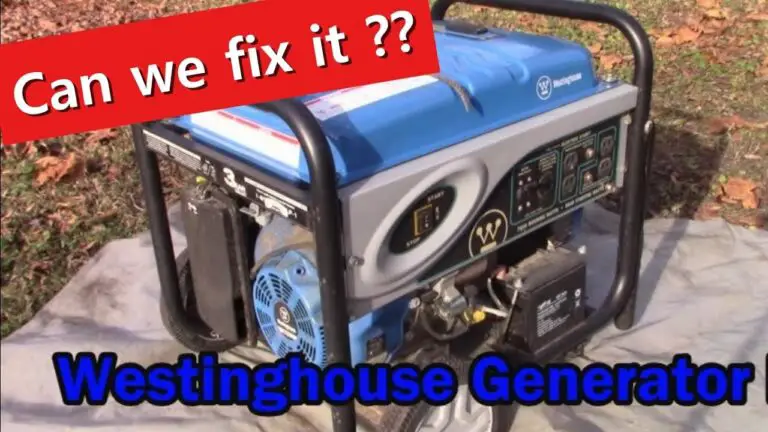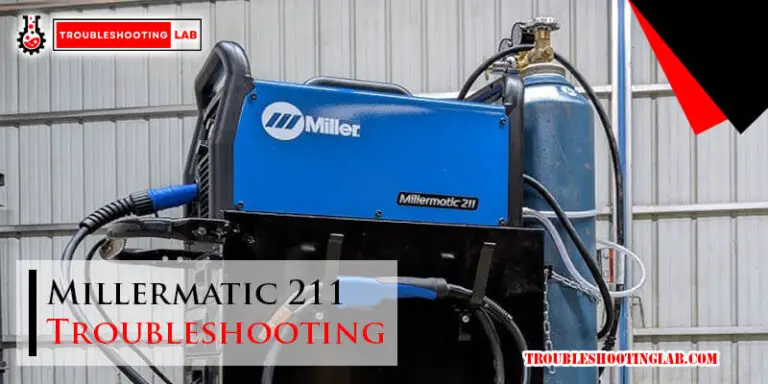Genie Lift Troubleshooting: Quick Fixes for Common Issues
Is your Genie Lift giving you trouble? Whether you’re dealing with a machine that won’t lift, a battery that won’t charge, or error codes that make no sense, you’re not alone.
These hiccups can stall your projects and cause unnecessary stress. But don’t worry—help is here. In this guide, we’ll walk you through common Genie Lift issues and simple troubleshooting tips to get your equipment back in action. Stick around because by the time you’re done reading, you’ll feel confident tackling those frustrating problems head-on.
Ready to save time, money, and headaches? Let’s dive in.
Common Genie Lift Issues
Genie lifts are essential for various industrial and construction tasks. They simplify work at heights, ensuring safety and efficiency. But like any machinery, they can face occasional problems. Understanding these issues helps in quick troubleshooting and smoother operations.
1. Lift Won’t StartA common issue is the lift failing to start. This can happen due to a dead battery or loose connections. Inspect the battery terminals and ensure they are clean and secure. Check if the battery has enough charge. Replace the battery if it’s not holding power.
2. Unresponsive ControlsSometimes, the control panel might not respond. This could be due to damaged wiring or faulty switches. Inspect the control wiring for visible wear or damage. Test the switches to confirm they are functioning properly. Replace damaged components as needed.
3. Hydraulic System LeaksHydraulic fluid leaks can reduce lift performance. Check the hydraulic lines for cracks or breaks. Inspect the fittings and seals for any signs of wear. Replace damaged parts immediately to prevent further issues.
4. Lift Moves SlowlyA slow-moving lift often indicates low hydraulic fluid levels. Check the fluid reservoir and refill it if needed. Contaminated hydraulic fluid can also cause slowness. Drain and replace the fluid if it appears dirty or thick.
5. Unusual NoisesStrange noises during operation may signal mechanical problems. Inspect the gears and moving parts for wear or misalignment. Lubricate parts that are dry to reduce friction. If noises persist, consult a technician.
Safety Precautions Before Troubleshooting
Before diving into troubleshooting a Genie lift, safety should always come first. Whether you’re a seasoned technician or a first-timer, overlooking safety precautions can lead to serious accidents or equipment damage. Taking the time to prepare can save you headaches—and potentially save lives.
Inspect Your Surroundings
Start by examining the area around the lift. Is the ground level and stable? Are there overhead obstacles like power lines or low ceilings? These factors can affect your safety and the equipment’s functionality.
If you’re working outdoors, check the weather. Windy conditions can make troubleshooting unsafe, especially if the lift is extended. Always ensure a clear and secure workspace before proceeding.
Wear Proper Safety Gear
Your personal protection matters. Equip yourself with a hard hat, safety gloves, and steel-toe boots. These basics can shield you from unexpected hazards.
If you’re troubleshooting electrical components, wear insulated gloves to prevent shocks. High-visibility vests are also a smart choice if you’re in a busy worksite with moving machinery.
Disconnect Power Sources
Before touching any part of the lift, disconnect it from its power source. Whether it’s battery-operated or plugged into an outlet, accidental activation can cause injuries.
Test and confirm that the lift is fully powered down. You don’t want the equipment moving unexpectedly while you’re diagnosing a problem.
Refer To The Operator’s Manual
The operator’s manual is your best friend. It provides manufacturer-specific safety guidelines that are often overlooked. Take a few minutes to review the relevant sections before starting.
Does the manual recommend certain tools? Are there warnings about specific troubleshooting steps? Following these instructions can prevent costly mistakes.
Ensure Stability Of The Lift
A Genie lift must be stable before any troubleshooting begins. Check the outriggers and leveling mechanisms. Are they secure and properly positioned?
Even a slight tilt can compromise your safety. If the lift wobbles or doesn’t feel solid, address this issue before anything else.
Think About Emergency Plans
What if something goes wrong? Have a plan in place to deal with emergencies. Make sure someone is nearby to assist if needed.
Keep a first aid kit within reach and know the emergency shut-off procedures for the lift. Being prepared can make a difference when seconds count.
Taking these precautions isn’t just about following rules. It’s about protecting yourself, your team, and the equipment. So before troubleshooting, ask yourself: Have you done everything to ensure a safe environment?
Lift Not Powering On
A Genie lift not powering on can create delays and frustration. This issue often stems from common, fixable causes. Proper troubleshooting ensures the lift operates safely and efficiently. Below are key steps to identify and resolve the problem.
Checking Battery Connections
Loose or corroded battery connections can stop the lift from powering on. Inspect the battery terminals for dirt or oxidation. Use a wire brush to clean corroded areas gently. Ensure all cables are tightly secured to the battery terminals. Look for any frayed or damaged wires and replace them if needed.
Inspecting The Emergency Stop Button
The emergency stop button, if engaged, can cut power to the lift. Check if the button is pressed in or locked. Release it by turning or pulling it, depending on the lift model. Confirm the button is functioning properly by testing its engagement and release.
Testing The Power Source
A faulty power source can also prevent the lift from starting. If the lift uses an external power supply, verify the outlet is working. Use a multimeter to check the voltage output. For battery-operated lifts, ensure the battery is fully charged. Replace the battery if it no longer holds a charge.
Hydraulic System Problems
Hydraulic system issues can bring your Genie Lift to a halt, leaving you stranded mid-task. These problems often stem from leaks, low fluid levels, or pump failures. The good news? With some troubleshooting, you can tackle many of these issues yourself and keep your equipment running smoothly.
Identifying Leaks
Leaks are one of the most common hydraulic system problems in Genie Lifts. Start by visually inspecting all hoses, seals, and fittings for signs of oil drips or residue. A small puddle under the machine or oily streaks along a hose can indicate a potential leak.
If you spot a leak, tighten loose fittings or replace damaged hoses immediately. Ignoring leaks can lead to bigger problems, like pressure loss or damage to other components. Always use manufacturer-recommended parts when replacing components to ensure compatibility and safety.
Inspecting Hydraulic Fluid Levels
Low hydraulic fluid levels can cause jerky movements or unresponsive lift operations. Check the hydraulic fluid reservoir regularly, especially if the lift is used frequently. Use the dipstick or sight gauge to ensure the fluid level is within the recommended range.
If the fluid is low, add the correct type of hydraulic oil as specified in the Genie Lift manual. Never mix different types of hydraulic oil, as this can affect performance and lead to system damage. Keep an eye on the fluid’s color as well—dark or milky fluid may indicate contamination and require a full fluid replacement.
Addressing Pump Failures
Hydraulic pump failures can cause the lift to lose power or stop working entirely. Listen for unusual noises like whining or grinding, which often signal a failing pump. Reduced lifting speed or difficulty maintaining height are also warning signs.
Before replacing the pump, check the filter for blockages and ensure the system is free of air bubbles. Air trapped in the hydraulic lines can mimic pump failure symptoms. Bleed the system following the manufacturer’s guidelines to remove any trapped air and see if the problem resolves.
Still not working? It might be time to replace the pump. Always consult the Genie Lift service manual or a qualified technician if you’re unsure about handling major repairs.
Have you faced hydraulic system problems with your Genie Lift? What steps helped you troubleshoot effectively? Share your experience in the comments below!
Platform Not Raising Or Lowering
Having a Genie lift platform that refuses to raise or lower can halt operations. Troubleshooting the issue is critical for safety and productivity. Several factors could cause this problem. By addressing each potential cause systematically, you can identify and resolve the issue effectively.
Examining Control Switches
The control switches are often the first point of failure. Inspect the switches for visible damage or wear. Check if the wires are securely connected and free of corrosion. Test the up and down functions to ensure the switches are responsive. Replace faulty switches with compatible parts to restore functionality.
Testing Limit Switches
Limit switches prevent the platform from moving beyond safe limits. A malfunctioning limit switch may block movement entirely. Locate the limit switches near the mast or platform. Use a multimeter to test their electrical continuity. Replace damaged switches immediately to avoid further complications.
Checking For Obstructions
Physical obstructions can stop the platform from raising or lowering. Inspect the lift’s mast, chains, and hydraulic components for debris or blockages. Remove any foreign objects that could interfere with movement. Ensure all parts are clean and lubricated for smooth operation.
Unusual Noises During Operation
Hearing strange noises from your Genie Lift can be unsettling. These sounds often signal that something isn’t quite right. Ignoring them could lead to bigger problems or even safety risks. The good news? Most noises can be traced back to simple issues that you can fix with basic troubleshooting. Let’s dive into the most common areas to check.
Inspecting Moving Parts
Moving parts are usually the first culprits when you hear unusual noises. Check components like rollers, chains, and gears for signs of wear or debris. A small piece of dirt lodged in a gear can make an annoying grinding sound.
Look for any visible damage, like cracks or bends in metal parts. Damaged components can rub against others, producing squeaks or rattles. Keep a flashlight handy so you don’t miss hard-to-see areas.
Ask yourself: when did the noise start? Pinpointing the timeline can help identify which part might be causing the issue, especially if the lift was recently used in harsh conditions.
Lubricating Joints
Dry joints are another common source of unwanted noise. Without proper lubrication, friction between parts can lead to squeaking or grinding sounds. Grab a good quality lubricant that’s safe for your Genie Lift—check the user manual if you’re unsure.
Focus on the lift’s pivot points and joints. Apply lubricant sparingly; too much can attract dirt and create new problems. Move the lift’s parts back and forth after applying to ensure the lubricant spreads evenly.
Still hearing noise? It might take a few cycles for the lubricant to fully work its way into tight areas. Give it some time before moving on to other troubleshooting steps.
Checking For Loose Bolts
A loose bolt might seem minor, but it can cause serious rattling or clanking noises. Use a wrench to test all visible bolts and fasteners on your Genie Lift. Tighten anything that feels even slightly loose.
Pay special attention to bolts around high-stress areas like the lift arms and base. These spots endure a lot of movement and are more likely to loosen over time. Don’t forget to inspect bolts near the motor—vibrations from operation can gradually shake them loose.
When tightening bolts, make sure they’re secure but not overtightened. Overdoing it could strip the threads or damage the part itself. Your goal is to eliminate unnecessary play between components.
Addressing unusual noises promptly keeps your Genie Lift running smoothly and safely. Which part of your lift do you think might be making that noise? Start there, and you’ll likely find the fix faster than you expect.
Steering And Mobility Issues
Are you struggling with steering or mobility problems on your Genie lift? These issues can slow down your projects and create safety concerns. Knowing how to troubleshoot them ensures your equipment stays reliable and efficient.
Assessing Wheel Conditions
Start by inspecting the wheels. Look for obvious signs like cracks, wear, or debris stuck in the treads. Damaged wheels can cause uneven movement or make steering harder.
Check the tire pressure if your Genie lift uses pneumatic tires. Low pressure can lead to sluggish mobility and increased wear. A simple pressure gauge can help you stay on top of this.
Also, pay attention to the wheel alignment. Misaligned wheels can make the lift drift or turn awkwardly. Adjust them to match the manufacturer’s recommendations.
Testing Drive Motors
Drive motors play a huge role in mobility. If your lift moves slowly or struggles to climb inclines, the motors might be the issue. Test them individually to pinpoint any faults.
You can start by listening for unusual noises. A noisy motor might be dealing with internal damage. Don’t ignore grinding or whining sounds—they’re often early signs of failure.
If one motor works fine but another doesn’t, swap it temporarily with a known good motor to confirm the problem. This simple check can save you time before diving into costly repairs.
Calibrating Steering Controls
Ever feel like the lift doesn’t respond well to your steering inputs? Calibration might be off. Miscalibrated controls can cause delays or unpredictable movements.
Refer to your Genie lift manual for calibration instructions. Many lifts have straightforward steps you can follow without special tools. It’s often as simple as resetting the control panel or fine-tuning the joystick sensitivity.
After calibration, test the lift by driving it in tight spaces. This will help you confirm that steering feels smooth and accurate. If it still behaves oddly, consider checking the wiring or electronic components.
Have you experienced steering issues before? What’s your go-to fix? Share your thoughts below!

Credit: pdf.directindustry.com
Error Codes And Alarms
Understanding error codes and alarms on Genie lifts can save time and effort. These messages are designed to alert operators to issues with the lift. Knowing how to decode and address these signals ensures safe and efficient operation. Ignoring error codes can lead to further complications or downtime.
Decoding Display Messages
Genie lifts often show error codes or alarms on the control screen. Each code has a specific meaning tied to the lift’s functionality. Refer to the operator’s manual for a complete list of codes. Common errors include battery issues, sensor malfunctions, or hydraulic problems. Pay attention to recurring codes, as they might indicate deeper system issues.
Resetting The System
Many error codes can be cleared by resetting the system. Start by turning off the lift for a few minutes. Then, restart it to check if the error persists. For persistent alarms, inspect components such as wiring or battery connections. Ensure the lift is on a flat surface before performing a reset.
When To Call For Professional Help
Some error codes require expert attention for proper diagnosis and repair. Call a technician if the lift fails to operate after basic troubleshooting. Issues such as motor failures or advanced electrical problems need specialized tools and knowledge. Delaying professional help can increase the risk of damage or safety hazards.
Regular Maintenance Tips
Keeping your Genie Lift in top condition doesn’t have to be overwhelming. A little proactive care can go a long way in preventing unexpected breakdowns. Let’s dive into some actionable maintenance tips to keep your equipment running smoothly and safely.
Scheduling Preventive Inspections
Set a regular schedule for inspecting your Genie Lift. Weekly or monthly checks can help you catch small issues before they turn into expensive repairs. Look for visible signs of wear, loose bolts, or leaks in hydraulic lines during these inspections.
Don’t wait until the equipment malfunctions to give it attention. Preventive inspections can save you from costly downtime. Ask yourself: When was the last time your lift got a thorough check?
Replacing Worn-out Components
Parts like tires, brakes, and hydraulic hoses wear out over time. Keep an eye on these components and replace them as soon as you notice excessive wear. For instance, a cracked hydraulic hose can quickly escalate into a major issue if ignored.
Always use manufacturer-approved parts for replacements. This ensures compatibility and extends the life of your equipment. Think about this: would you risk safety by using a cheap, non-standard part?
Keeping A Maintenance Log
A maintenance log is your equipment’s health record. Document every inspection, repair, and component replacement. This helps you track patterns and predict when parts might need attention.
Use a notebook, spreadsheet, or even a mobile app to keep things organized. A well-maintained log can also increase resale value if you ever decide to sell the equipment. Imagine how much smoother things would run with all your maintenance history at your fingertips.
By following these tips, you’ll not only maximize your Genie Lift’s efficiency but also ensure a safer working environment. Start small, stay consistent, and your efforts will pay off in the long run.

Credit: duralift.com.au

Credit: www.amazon.com
Conclusion
Troubleshooting a Genie Lift doesn’t have to be overwhelming. Start with basic checks. Inspect the machine for loose parts or damaged wires. Follow the manual for proper guidance. Regular maintenance helps prevent common issues from occurring. Always prioritize safety while working on repairs.
If problems persist, contact a professional technician. Proper care ensures your Genie Lift stays reliable and efficient. Keep these tips handy for quick resolutions. With consistent upkeep, your equipment will last longer and perform better. Remember, small efforts now can save bigger troubles later.

